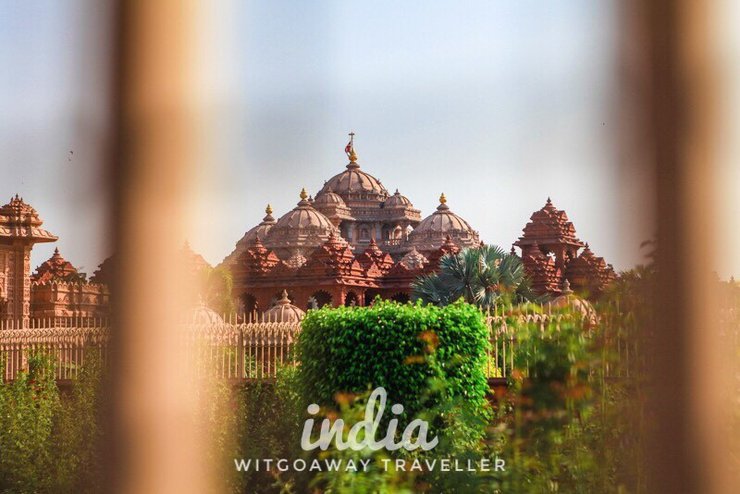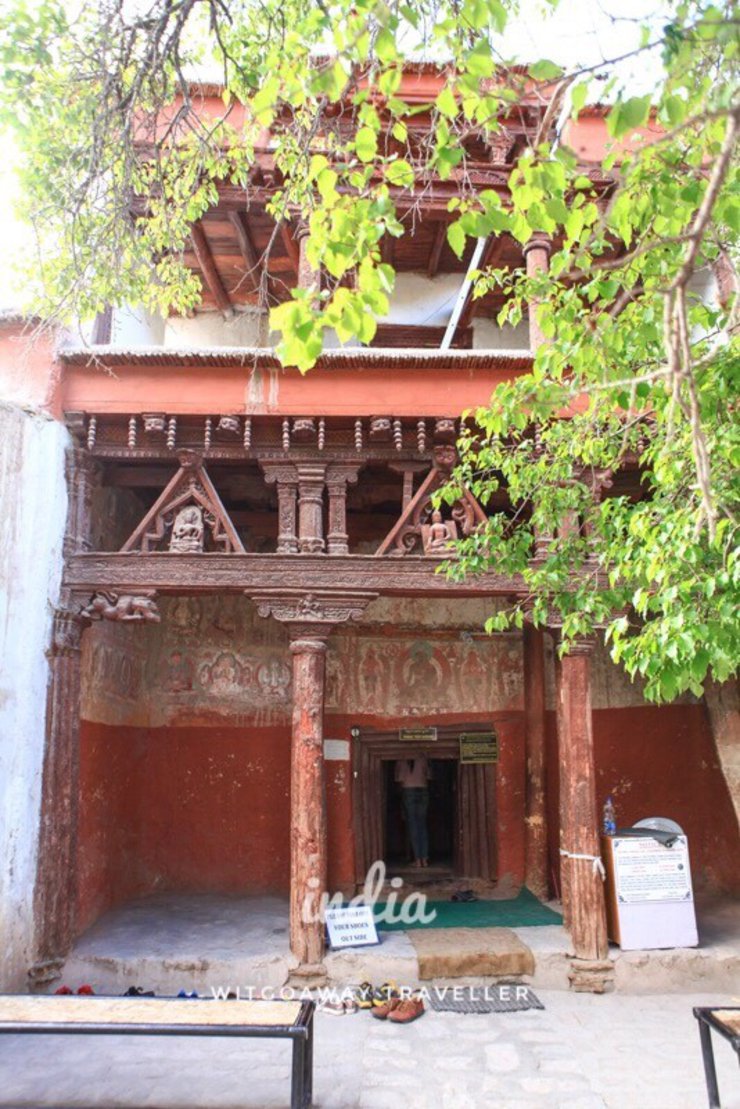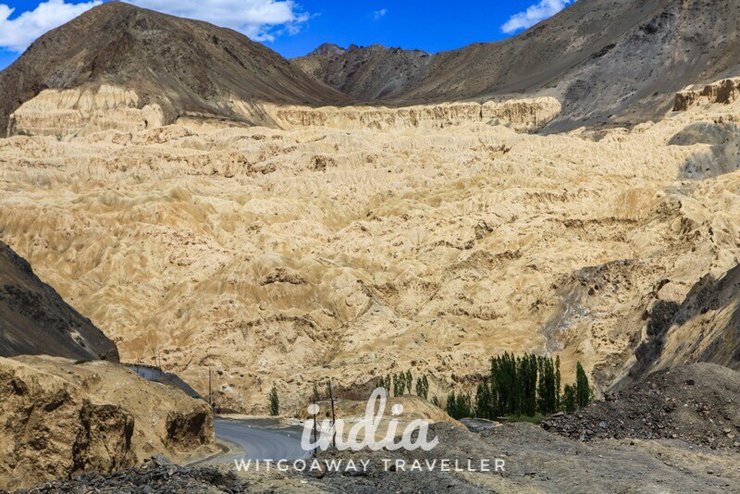17+1: Reaching Leh and Shimla, Unveiling a Different Side of India
Greetings, friends! Welcome back to another post about India, a country that has left a lasting impression on many. However, the aspects that have captivated me may differ from those that have captured the hearts of others.
The trip lasted 17 days, with an additional day added by the national airline as a complimentary bonus.
The actual trip was 17 days, not counting the extra day spent waiting at the hotel. The trip was divided into two parts.
1-7 June 2017: Travel around Ladakh
Jun. 9-17, 2017: Road trip from Leh to Shimla to Delhi.
This is my second visit to Leh and the Leh-Manali route. Last year, I only reached Manali and then took a bus to Delhi. This time, I decided to stop at Shimla as I wished.

Rough itinerary:
Bangkok - Delhi - Leh - Lamayuru - Pangong - Leh - Nubra - Leh - Tsomoriri - Sarchu - Manali - Shimla - Delhi - Bangkok
The sentence is already in English and does not require translation.
This review will primarily focus on the Leh-Shimla route.
As I reviewed Leh Ladakh last year on the Srinagar - Leh route,
Kashmir - Leh Road Trip: What to Review When Everyone's Already Been There?
https://pantip.com/topic/35850321
For other works or questions, please follow http://www.facebook.com/witgoaway. Thank you.
Let's begin.
- Day one of the journey *
We traveled by "Pa Muang" (a slang term for a low-cost airline) from Bangkok to Delhi, arriving around noon. The weather was scorching hot.
Upon arrival, we immediately embarked on our sightseeing adventure. Our first stop was...
Humayun's Tomb
Located in the heart of Delhi, the Humayun's Tomb is the resting place of the Mughal Emperor Humayun. Notably, it was commissioned by his first wife, unlike the Taj Mahal, which houses the tomb of his consort. This information was provided by a local guide and further confirmed through research.
Registered as a UNESCO World Heritage Site in 1993, this site evokes a fleeting resemblance to the Taj Mahal. However, the two structures differ in their primary building materials: red sandstone and white marble, respectively.
This is another place worth visiting if you have time. It's not very crowded, but I think it's very beautiful.





Akshardham
The only photo I could take, as they prohibited cameras inside. This is a replica of a real place, but the marble carvings are exquisite. However, it was very crowded because it was free entry. Free things, you know...
Day Two: Delhi - Leh - Lamayuru - Alchi - Likir - Leh
The early morning flight was fortunate to have clear skies, offering stunning views of the mountainous landscape.

The journey from Delhi to Leh typically requires a full day of acclimatization due to the significant change in altitude. This can result in symptoms such as fatigue, headaches, and dizziness.
Initial remedies include drinking plenty of water (women often avoid this due to frequent bathroom visits, haha!), which is crucial for your body, and moving slowly. Sometimes we forget and rush to capture beautiful scenery.
No need to acclimatize, head straight to Lamayuru.
Along the way, we stopped at the confluence of the Zanskar (turbid) and Indus rivers.

Lamayuru - Moon Land, a place with eroded landscape, but it actually has a beautiful monastery. I didn't take any wide-angle photos, but you can check out the previous reviews.

Alchi

Likir
Another monastery with a Tibetan style in the Gelug sect, similar to Thiksey, is located near Alchi, approximately 50 km from Leh.

** Day 3 of the journey ** No need to rest, continue to Pangong Lake
This name does not guarantee any beauty, as it is very famous. For those who come to Leh, this lake is always mentioned.
The lake is located at an altitude of approximately 4,250 meters. The weather is typically cold year-round. During my most recent visit in June, the temperature was 2 degrees Celsius. The summer season is relatively short and mild.


There are 55+ outdoor toilets.



Despite its high altitude, the temperature here remains cool even during the summer months. During my visit, the nighttime temperature dipped to a chilly 2°C, while daytime temperatures ranged comfortably between 10-20°C, although the sun could feel quite warm.
Day 4: Return to Leh
Make the most of your trip here.
Day 5: Visiting Temples
On the fifth day, we visited nine temples, although only five were within the Leh district. We explored the surrounding areas, allowing our driver to rest.
Starting with the first...those who are devout have come.
Hemis Monastery
This significant temple's original structure predates the 11th century and was associated with Tibetan Drukpa Buddhism. A new temple was subsequently constructed in 1672.

Shey Palace
In the past, it was the summer capital of Ladakh. Inside, there is a statue of Shakyamuni Buddha.
The Maitreya Buddha statue, also known as the Chamba statue, is a colossal statue of the future Buddha, Maitreya. It is located in Ladakh, India, and is considered to be the second largest statue of Maitreya in the world. The statue was built in the 10th century and is carved from a single piece of granite. It is 32 meters (105 feet) tall and is considered to be one of the most important Buddhist pilgrimage sites in Ladakh.

Thiksey Monastery
Located approximately 20 kilometers from Leh city, this Buddhist monastery belongs to the Gelug sect in Tibet, which emphasizes the following aspects:
Logic and argumentation are fundamental.
Similar to Tibetan monasteries, this is a must-see for anyone visiting Leh.

The translation of "Leh Palace" to English is "Leh Palace".
Is there anything else I can help you with today?
Towering over the city of Leh, visible from every corner, stands the majestic Leh Palace. Inspired by the Potala Palace in Lhasa, it was constructed by King Sengge Namgyal in the 17th century. The nine-story palace served as the royal residence on the upper floors, while the lower levels housed stables and storage rooms. The rooftop offers panoramic views of Leh, with the surrounding mountains forming a breathtaking backdrop.

Namgyal Tsemo Monastery
A prominent monastery in the Ladakh region, visible from both Shanti Stupa and Leh Palace.



A view of Leh city
** Day 6 ** Leh - Khardung La - Nubra Valley (Diskit)
After giving the driver a break, we continued our journey to Nubra Valley via Khardung La, the world's highest motorable pass.
We have come so high…



And then the snow began to fall...

Nubra Valley (Diskit)
We have arrived.
The desert exists, but it is the sand of the river…

** Day 7: ** Return to Leh
However, today was not smooth sailing. We were stuck on the way up to Khardung La for 9 hours due to heavy snowfall yesterday and the need to clear the road.
Despite clearing the path, the steep incline and slippery ice surface made it difficult for vehicles to ascend. Our vehicle required multiple attempts, driving up and reversing, to successfully navigate the slope.
From 11 a.m. until 8 p.m., when the sun sets, the weather suddenly turns cold. We can only hope that it will pass soon.



Finally escaped at around 8:00 PM. Phew... relieved...^^
Day 10: Arrival and Market Exploration
Another group of friends arrived on the 10th. After settling in and acclimating, they all went for a walk through the market.
<<< To be continued >>>
** Day 11 ** Leh - Tsomoriri
Second visit here.
The journey from Leh took about 6-7 hours, which was tiring, but once we arrived, we forgot all about it.

Marmots are frequently encountered along the Leh route, particularly at elevations above 3,500 meters. They can be found in grassy areas, where their brown fur blends in with the surroundings. However, they are easily spotted when basking in the sun, as their fur becomes more visible.

Before reaching Tsomoriri, you will encounter a lake along the way.



Take a deep breath....^^

Tsomoriri
We have arrived.
A high-altitude lake (4,522 m) surrounded by the Tso Moriri Wetland Conservation Reserve.
Approximately 26 km long and 3-5 km wide, the weather here is quite volatile even in summer. In June, it can snow, just like when I went there, 0 degrees Celsius, brrr...






This area is a protected wetland, and many species of birds often come here to feed. However, the number of birds is truly remarkable.
The nighttime temperature here in June was 1 degree Celsius.
** Day 12 ** Tsomoriri - Sarchu
Today's journey will depart from Tsomoriri to Manali, with an overnight stay in Sarchu due to the high mountain passes that limit speed. Departing late in the morning, we will arrive in Sarchu in the evening.
Before leaving, I would like to conduct one more survey in the morning. ^^
Encountered snowfall with a temperature of 0°C.

The snow is rapidly transforming the color of the mountains…

The faint sun begins to shine.





Oh my! I turned to look at the mountain on the lakeside again, and it was all white...







Jumping so high, forgetting how high they are...



Embark on a journey to Sarchu.
The journey to Sarchu is breathtaking, with stunning scenery that will keep you awake and mesmerized.

Sarchu
The journey from Leh to Manali covers a distance of approximately 470 kilometers. However, due to the mountainous terrain and challenging road conditions, an overnight stay in Sarchu is recommended. The high altitude, reaching 4,290 meters above sea level, results in a cold climate, with temperatures in June typically ranging from 2 to 3 degrees Celsius.
Tonight, I'm sleeping in a freezing cold tent camp.
** Day 13 ** Sarchu - Manali with iphone
Another day of traveling all day, but most importantly, the camera battery is completely dead... All the pictures from now on are from my iPhone SE.
The highlight is the breathtaking scenery along the way. Don't miss it, or you'll regret it if you fall asleep...
Waking up here, we might be confused... Did we really come here? Haha.











We arrived in Manali around 5 pm, but due to heavy traffic, it took us almost 3 hours to reach our accommodation, arriving at 10 pm. You heard that right, the traffic was truly horrendous.
** Day 14 ** We did not stop until we reached Shimla. We continued our journey to Shimla.
Approximately 8-9 hours.
Shimla, the capital of Himachal Pradesh, was once a summer resort during the British era. As a result, British architecture can be found throughout the city. The permanent population here is around 180,000, making it one of the least populated capitals in India.

The translation of the text is:
Day 15
Full of Shimla
Begin with an English gentleman.
Viceregal Lodge
Known as The Rashtrapati Niwas, it served as the Viceroy's residence during the British era. Designed by an English architect, it bears a striking resemblance to English architecture.





Shimla Railway Station
Similar to other railway stations, this one is associated with a UNESCO World Heritage Site. The Kalka-Shimla route, located at an altitude of 1,552 meters, is another significant railway station in India.



Jakhoo Temple
Riding the cable car to see the monkeys... or rather, to the temple... but there were so many monkeys, and they liked to snatch things. They didn't seem to be looking, but don't let your guard down...



The Mall and The Ridge Road
It's time to shop, eat, and relax on this street. You can walk freely because it's only for pedestrians.
What impressed me the most was the campaign for a smoke-free Shimla. In fact, I hardly saw anyone smoking during my four-hour walk. I only saw one person smoking, which was fantastic.




The city retains its predominantly English architectural style...
Before the sun sets.
** Day 16 ** Travel back from Shimla to Delhi, a full day journey of 6-8 hours.
**Day 17** was supposed to be the day we flew back from Delhi to Bangkok. However, **Aunt Violet** (a nickname for the airline) decided to give us an extra day, filled with technical problems with the aircraft. So, we ended up eating **roti** for another day. We've been eating it for 16 days already, and now we have to eat it for another day...
** He arrived home on the 18th. **
Come and get… stir-fried pork with basil + fried egg… my love.
The following is a translation of the provided text from Thai to English:
Thank you for following. I hope you enjoyed it. But traveling by yourself is much more fun than pictures.
Please follow other works at http://www.facebook.com/witgoaway. See you in the next review.
The camera used was a Canon 5D Mark II with a 24-70mm f/2.8 lens, as well as an iPhone SE.
Thank you Pantip for providing a platform to share stories.
WitGoAway Traveller
Wednesday, October 9, 2024 5:59 PM











![Cover [ Baikal ] Crossing...Lake Baikal...](https://asset.readme.me/files/55891/thumb.cover.jpg?v=471990f7)




